The charming Alhambra post will briefly introduce you to this magical Arabic Palace in Granada, one of the world’s most precious cultural monuments. Furthermore, we will hint at when to visit it and why. So, let’s stay with us.
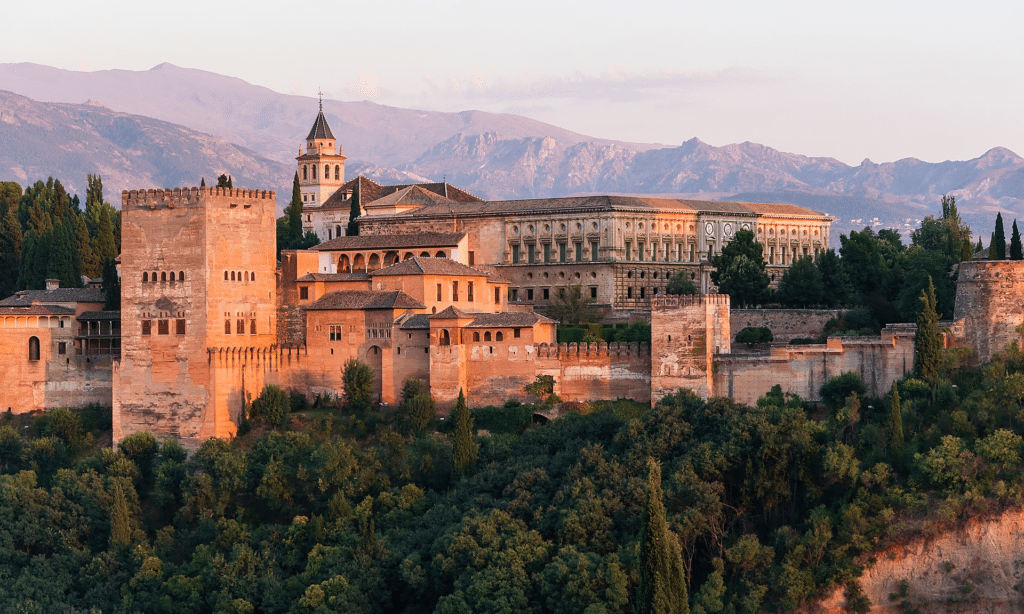
©Getty Images
Short Intro to the Charming Alhambra Palace
The Alhambra Palace in Granada, Spain, is a palace, fortress, and citadel built in the 8th century. It’s one of the most notable pieces of Islamic architecture in Spain. ‘Alhambra’ is the Spanish adaptation of the Arabic term ‘qa’lat al-Hamra,’ which roughly translates to “red castle.” The name comes from the sun-dried bricks used to build the fortress around the castle.
The Alhambra Palace is of great significance, as it is the only surviving palatine city (related to the imperial courts in Europe since Roman times) of the Islamic Golden Age. The famous fortress in Spain is a testament to Islamic architecture. It is a nostalgic reminder of Spain’s glorious Islamic Golden Age (from the 8th to 14th centuries). Not only is the palace a breathtaking piece of architecture, but it is also surrounded by bountiful natural beauty, aptly described by Moorish poets as “a pearl set in emeralds.”
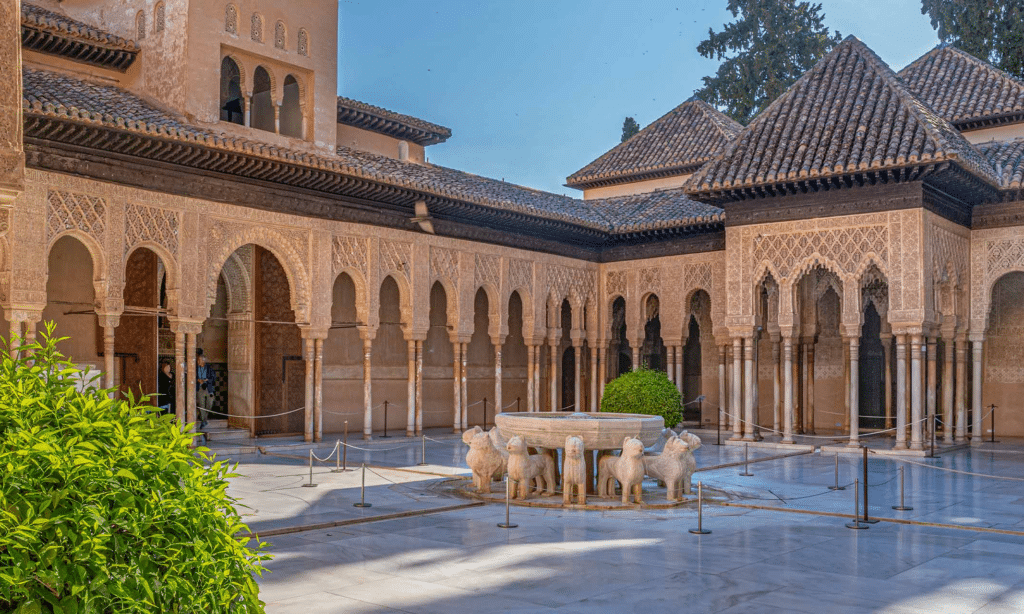
©espanaguide.com
Who Built The Alhambra Palace?
Initially built in 889 CE as a small fortress, the palace was enlarged and renovated by the founder of the Nasrid Dynasty, Mohammed ben Al-Ahmar of the Emirate of Granada, in the 13th century. The Emirate of Granada was a kingdom in southern Iberia, and it was the last bit of the Iberian peninsula held by the Muslims.
The fortress was then converted into a royal palace by Yusuf I, the Sultan of Granada. The successors of the Nasrid dynasty kept making additions to the citadel, which has led to the awe-inspiring structure that it is today, even after years of neglect and decay. At the same time, the palace has been the collective effort of numerous rulers, who stuck to the theme of “paradise on earth” while adding new sections to the court.
When Islamic rule ended in 1492, King Ferdinand of Aragon and Queen Isabella of Castile conquered Granada, making the palace their royal court. Under their leadership, it was partially modified. Additionally, the castle underwent many transformations under the rule of Charles V from 1515 – 1556, who ordered the destruction of certain parts of the Alhambra complex to build a Renaissance-style palace for himself. He also made other structures and replaced some—for example, the mosque built by the Muslim rulers was replaced by a church.
So what does the Charming Alhambra Palace represent? The efforts of multiple rulers over centuries, with each cultural influence making its mark, now stand as an ideal of Muslim art and architecture in Spain’s history.
Why Is Alhambra Palace Famous?
Situated on Sabika Hill, the Alhambra Palace provides a breathtaking view of the entire city of Granada. Numerous gardens complement the complex, including the famous Generalife Gardens, created in a typical Persian style.
As you approach the palace, you realize it’s irregular and consists of numerous towers and smaller structures. In keeping with the “paradise on earth” theme, it’s complemented by splashing fountains, mirroring pools, and column arcades. Moreover, the palace was designed for a more natural touch so the sun and wind would filter through freely.
Furthermore, on the palace walls, you can see Arabic inscriptions of poems written to praise the castle, touching upon the Nasrid dynasty’s spiritual, poetic, and political world. They are organized into geometrical patterns and elaborate arabesque designs. Overall, the Alhambra Palace reflects the culture of the last centuries of Islamic rule in the Iberian peninsula. Over the years, it has accumulated the skills of Muslim, Christian, and Jewish artisans, architects, and artisans. It stands as a testament to their multicultural appeal.
Besides its architectural and scenic beauty, the palace hosts many anecdotes and legends, making it even more enigmatic. An interesting theory attributes the name to the palace’s founder and his fiery red hair, which earned him the nickname al-ahmar (the red).
Another well-known legend surrounding the palace is related to the Gate of Justice, one of the main entrances to the fortress. This gate features one of the most significant symbols of the Alhambra—a hand carved in the arch’s keystone and a key in the center of the inner archway. The two are dominant Islamic symbols, where the needle is usually used to ward off the evil eye. The legend says that the world will end when the writing and key become one, implying that the destruction of such an elaborate fortress would also mean the end. It is contemplated that the Catholics installed a statue of the Virgin Mary in fear of this legend coming true. Aesthetically, the gothic figure of the Virgin Mary fits well with the Islamic icons and shows various cultures and religions laying claim to the expansive Alhambra Palace. They complement each other well.

©mrks_v/stock.adobe.com
Is The Alhambra Palace A Wonder Of The World?
In 2007 the palace came close to being granted the status of “new wonder of the world.” Unfortunately, it was not selected. The contest, based on votes, was later criticized for being heavily faked.
However, The United Nations Educational, Scientific and Cultural Organization (UNESCO) declared the Alhambra Palace a World Heritage Site as it contains all the known artistic techniques of the Hispano-Muslim world. Moreover, the Alhambra used stucco (plaster), wood, and ceramic as decorative elements. As this is coupled with Arabic epigraphy, it sets it apart from the rest of the monuments and is uniquely attributed to Islamic architecture.
The Charming Alhambra today
In the 19th century, American author Washington Irving took up residence at the castle, where he wrote the book ‘Tales of the Alhambra,’ a collection of essays on stories about the beautiful palatial city. His book shed light on Spain’s Islamic history and introduced the historical site to Western audiences. To commemorate this, in 2009, on Irving’s 150th death anniversary, the managers of the Alhambra erected a statue of the writer in a park outside the palace.
The famous palace in Andalusia is of great significance even today. It remains Spain’s most visited historical site.

©thenotsoinnocentsabroad.com
Reasons To Visit The Palace
The answer to that is pretty obvious. However, we will still take a little time to explain its significance. Firstly, a beautiful reminder of Spain’s long-lost Islamic history. Whether you are a history buff or a nature enthusiast, the Alhambra Palace has something in store. It’s no wonder the palace is one of the most famous spots in Spain.
However, as a famous tourist spot, it is often very crowded, sometimes making it difficult to take in its beauty. But, as every dark cloud has a silver lining, in post-pandemic times, the crowds will be regulated, making the experience even more enjoyable.
Until then, you can always opt for virtual tours on the official website or pick up Irving’s book to experience Alhambra vicariously.
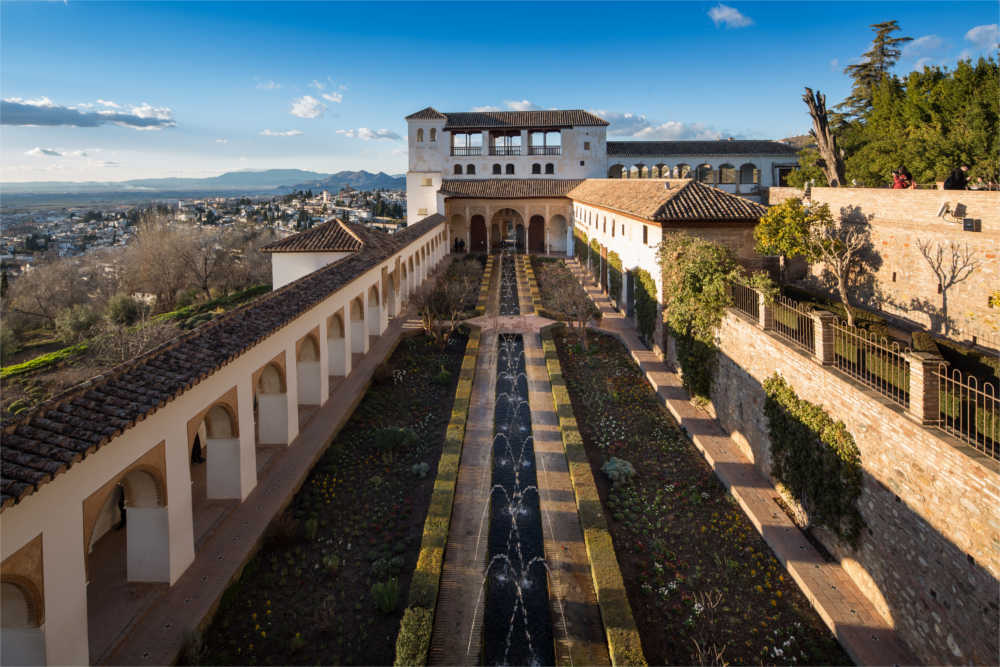
©alhambra-patronato.es
How to get to the Alhambra
- If you are in the city of Granada, use the public bus. It is easy, practical, and very cheap.
- However, You can also walk from the city center; it will be an uphill climb.
- If you are out of Granada, arrive via the A-44 and follow the signs to Alhambra’s parking.
Should you book the ticket in advance?
Our answer is yes. The Charming Alhambra Palace is hugely popular, so we advise you to book tickets in advance. We recommend booking the guided tours, so you can hear all the anecdotes connected with the palace, giving it even greater appeal.
Our website includes affiliate links. So, keep in mind that we may receive commissions when you click our links and make purchases. Please read our legal disclaimer document for more information about our Affiliate disclaimer and other disclaimers like Fair-Use disclaimer, etc.
Take a look at
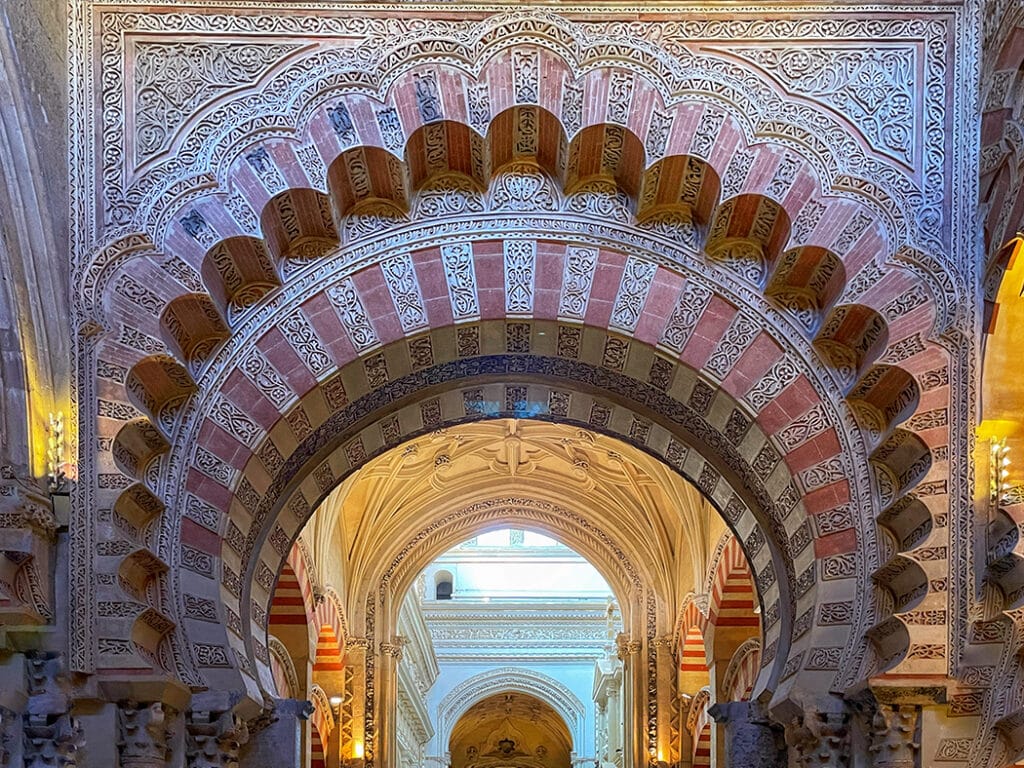
Majestic Mezquita
It’s impossible to amplify the beauty of Córdoba’s great mosque with its exceptionally tranquil and immense interior. One of the world’s greatest works of Islamic

Why go to Ibiza?
Ibiza has been constantly among the most popular Mediterranean destinations for the past few decades. But many know only its clubbing fame. However, there is
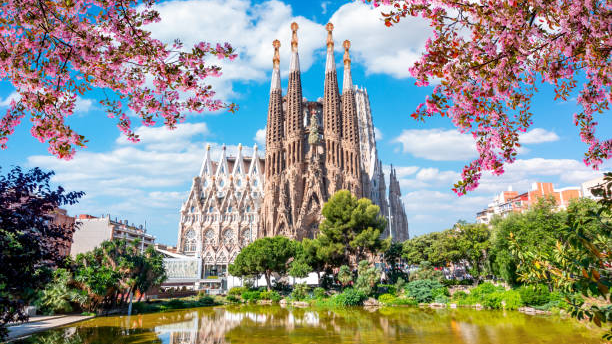
Charming guide to Barcelona
This Charming guide to Barcelona will reveal the essence of this magnificent city. Its significant attractions some valuable tips, as well as some good-to-know secrets.
References and sources:
Photo credits:
Feature photo credits: espanaguide.com
